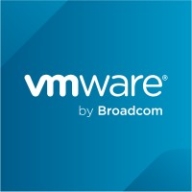


Red Hat Ceph Storage and VMware Software Defined Storage compete in the software-defined storage market. VMware often has the upper hand due to its comprehensive enterprise-level features and virtualization capabilities, despite Ceph's scalability and open-source integration.
Features: Red Hat Ceph Storage provides scalability, open-source compatibility, and seamless cloud integration, ideal for large-scale data environments. VMware Software Defined Storage offers advanced virtualization features, enterprise-grade security, and integration within VMware's ecosystem for improved virtual environment functionality.
Room for Improvement: Red Hat Ceph Storage could enhance its enterprise support and virtualization features, while simplifying management tools. VMware Software Defined Storage might improve open-source compatibility, reduce pricing for broader accessibility, and enhance scalability options beyond VMware environments.
Ease of Deployment and Customer Service: Red Hat Ceph Storage provides flexible deployment with strong support for integration and troubleshooting. VMware Software Defined Storage offers a streamlined deployment within VMware environments, with efficient customer service tailored to enterprise needs, making the process smoother for clients.
Pricing and ROI: Red Hat Ceph Storage's competitive pricing reflects its open-source nature, offering quicker ROI for those leveraging open-source infrastructure. VMware Software Defined Storage, while more costly, provides substantial ROI through enhanced management and virtualization efficiencies, appealing to enterprises seeking comprehensive benefits.
| Product | Market Share (%) |
|---|---|
| Red Hat Ceph Storage | 18.4% |
| Pure Storage FlashBlade | 4.1% |
| VMware Software Defined Storage | 1.4% |
| Other | 76.1% |



| Company Size | Count |
|---|---|
| Small Business | 11 |
| Midsize Enterprise | 11 |
| Large Enterprise | 20 |
| Company Size | Count |
|---|---|
| Small Business | 13 |
| Midsize Enterprise | 4 |
| Large Enterprise | 15 |
| Company Size | Count |
|---|---|
| Small Business | 2 |
| Midsize Enterprise | 1 |
| Large Enterprise | 6 |
FlashBlade is the industry’s most advanced scale-out storage for unstructured data, powered by a modern, massively parallel architecture to consolidate complex data silos (like backup appliances and data lakes) and accelerate tomorrow’s discoveries and insights.
VMware software-defined storage is a simple, yet intelligent, storage data center architecture that aligns with business and application demands—eliminating static, purpose-built and inefficient hardware with dynamic, agile and automated solutions.
We monitor all Software Defined Storage (SDS) reviews to prevent fraudulent reviews and keep review quality high. We do not post reviews by company employees or direct competitors. We validate each review for authenticity via cross-reference with LinkedIn, and personal follow-up with the reviewer when necessary.